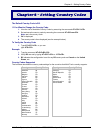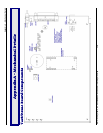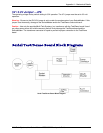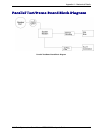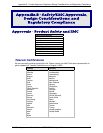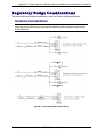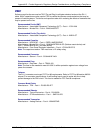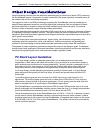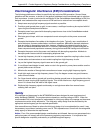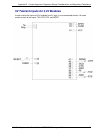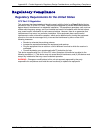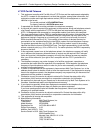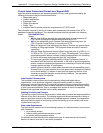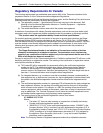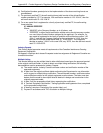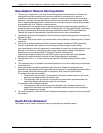
Appendix B – Product Approvals, Regulatory Design Considerations, and Regulatory Compliance
Multi-Tech Systems, Inc. SocketModem MT5600SMI Developer’s Guide 122
Electromagnetic Interference (EMI) Considerations
The following guidelines are offered to specifically help minimize EMI generation. Some of these
guidelines are the same as, or similar to, the general guidelines but are mentioned again to reinforce
their importance. In order to minimize the contribution of the SocketModem-based design to EMI, the
designer must understand the major sources of EMI and how to reduce them to acceptable levels.
1. Keep traces carrying high frequency signals as short as possible.
2. Provide a good ground plane or grid. In some cases, a multilayer board may be required with full
layers for ground and power distribution.
3. Decouple power from ground with decoupling capacitors as close to the SocketModem module
power pins as possible.
4. Eliminate ground loops, which are unexpected current return paths to the power source and
ground.
5. Decouple the telephone line cables at the telephone line jacks. Typically, use a combination of
series inductors, common mode chokes, and shunt capacitors. Methods to decouple telephone
lines are similar to decoupling power lines, however, telephone line decoupling may be more
difficult and deserves additional attention. A commonly used design aid is to place footprints for
these components and populate as necessary during performance/EMI testing and certification.
6. Decouple the power cord at the power cord interface with decoupling capacitors. Methods to
decouple power lines are similar to decoupling telephone lines.
7. Locate high frequency circuits in a separate area to minimize capacitive coupling to other circuits.
8. Locate cables and connectors so as to avoid coupling from high frequency circuits.
9. Lay out the highest frequency signal traces next to the ground grid.
10. If a multilayer board design is used, make no cuts in the ground or power planes and be sure the
ground plane covers all traces.
11. Minimize the number of through-hole connections on traces carrying high frequency signals.
12. Avoid right angle turns on high frequency traces. Forty-five degree corners are good; however,
radius turns are better.
13. On 2-layer boards with no ground grid, provide a shadow ground trace on the opposite side of the
board to traces carrying high frequency signals. This will be effective as a high frequency ground
return if it is three times the width of the signal traces.
14. Distribute high frequency signals continuously on a single trace rather than several traces
radiating from one point.
Safety
All creepages and clearances for the MT5600SMI have been designed to meet requirements of
safety standards EN60950. The requirements are based on a working voltage of 250V. When the
recommended DAA circuit interface is implemented in a third party design all creepage and clearance
requirements must be strictly adhered to. The third party safety design must be evaluated by the
appropriate national agency per the required specification.
User accessible areas: Based on where the third party design is to be marketed/sold or used, it may
be necessary to provide an insulating cover over all TNV exposed areas. Consult with the recognized
safety agency to determine the requirements.
Notice: Even if the recommended design considerations are followed, there are no guarantees that a
particular system will comply with all the necessary regulatory requirements. It is imperative that
specific designs be completely evaluated by a qualified/recognized agency.



